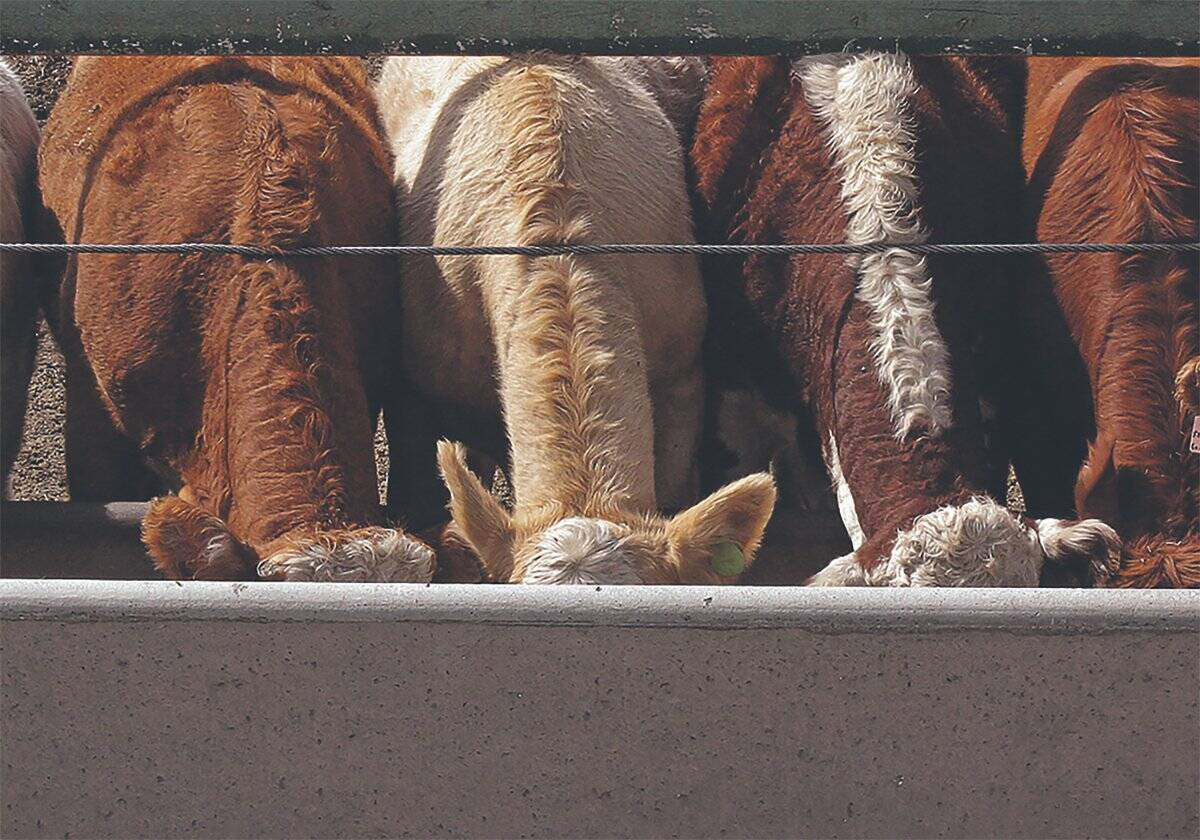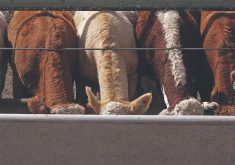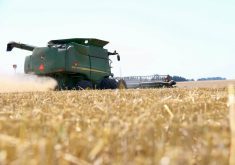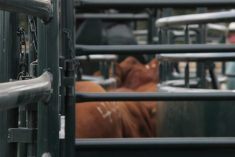Western Canadian feeder cattle prices were steady with week-ago levels as the yearling run moves into full gear.
Feedlot managers continue to step forward quite aggressively, with many lots running less than 50 per cent capacity. Lighter weight calves were actually up $2-$3 per hundredweight (cwt) on average due to strength in the deferred live cattle futures. Barley prices edged higher but this did little to temper buying enthusiasm.
A small group of mixed steers weighing just over 500 pounds sold for $180/cwt in southern Alberta. Steers weighing 600 to 700 lbs. were selling in the range of $150-$160/cwt in the same region. In central Alberta, a diverse group of Charolais-cross steers weighing 700 to 740 lbs. sold for $150/cwt. Alberta packers were buying fed cattle at $111/cwt last week, steady with week-ago levels.
Read Also

U.S. livestock: CME cattle futures end lower, hogs mostly lower
Chicago | Reuters – Chicago Mercantile Exchange (CME) cattle futures turned lower on Friday on profit taking, inflation concerns and…
The April 2013 live cattle futures contract made new contract highs this Tuesday reaching over $136. There is potential for a sharper year-over-year decline in first-quarter beef production. Larger-than-expected U.S. placements during the summer months due to the Midwest drought will change the seasonal fed marketing pattern from October 2012 through May 2013. The U.S. feeder market is leading Canadian prices higher because many farmers in the drought regions made silage and have plenty of forage for backgrounding. Corn prices may come under pressure as the U.S. harvest progresses, which will also underpin feeder values in the short term.
I’m expecting strong demand for Canadian feeder cattle from U.S. feedlots during the winter and spring of 2013. The feeder cattle futures point to stronger values moving into the late fall period; therefore, feedlot operators have price incentive to buy sooner, rather than later.
— Jerry Klassen is a commodity market analyst in Winnipeg and maintains an interest in the family feedlot in southern Alberta. He writes an in-depth biweekly commentary, Canadian Feedlot and Cattle Market Analysis, for feedlot operators in Canada. He can be reached by email at [email protected] for questions or comments.















